Choke cherry identification is important for peach and sweet cherry growers. This is because choke cherry (Prunus virginiana L.) is important in spreading a fatal disease of peach and sweet cherry trees, called X-disease. The disease is caused by a phytoplasma, which is spread from tree to tree by certain species of leafhoppers. The leafhoppers pick it up by feeding on X-infected choke cherries or X-infected sweet cherries.
We have no way to cure the disease once it gets into the peach or cherry trees, so we focus on preventing its spread. We recommend eliminating choke cherries from within 500 feet of the peach or sweet cherry orchard. If you’re unsure of identifications, you could just eliminate any cherry-looking things within 500 feet, but that might make lots of unnecessary work.
How do you identify the offenders? If you’re just interested in eliminating the infected choke cherries, it is very easy in late July. Why? Infected choke cherries have foliage that is yellowish green at that time, with bronze colors starting to appear. Then they shift to dark bronze colors. From the time they start this shift (late July), they really stand out from other vegetation. Almost nothing else here looks like that at that time (July 25 to Aug 5).
What if you wish to eliminate all choke cherries? You can use several traits to identify them. Choke cherry leaves have very fine, pointed teeth at the margin.
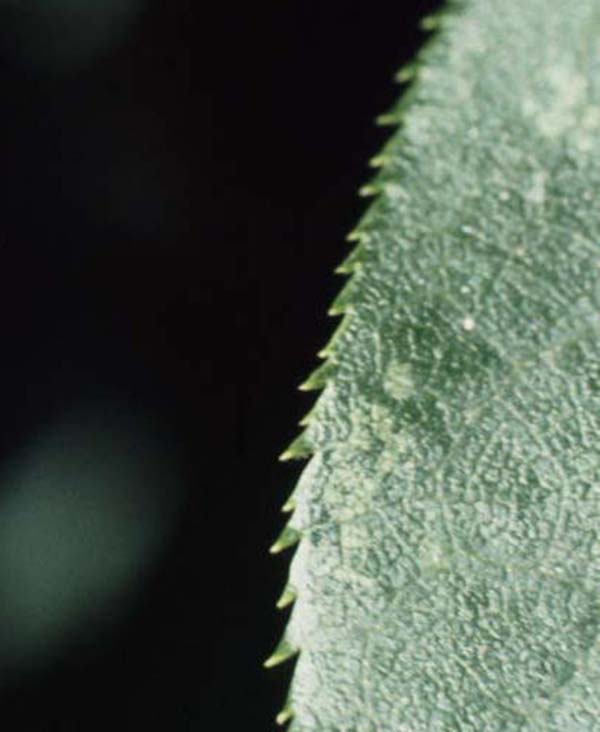
Black cherry (our most common cherry species here, Prunus serotina) has leaves with rounded teeth at the margin.
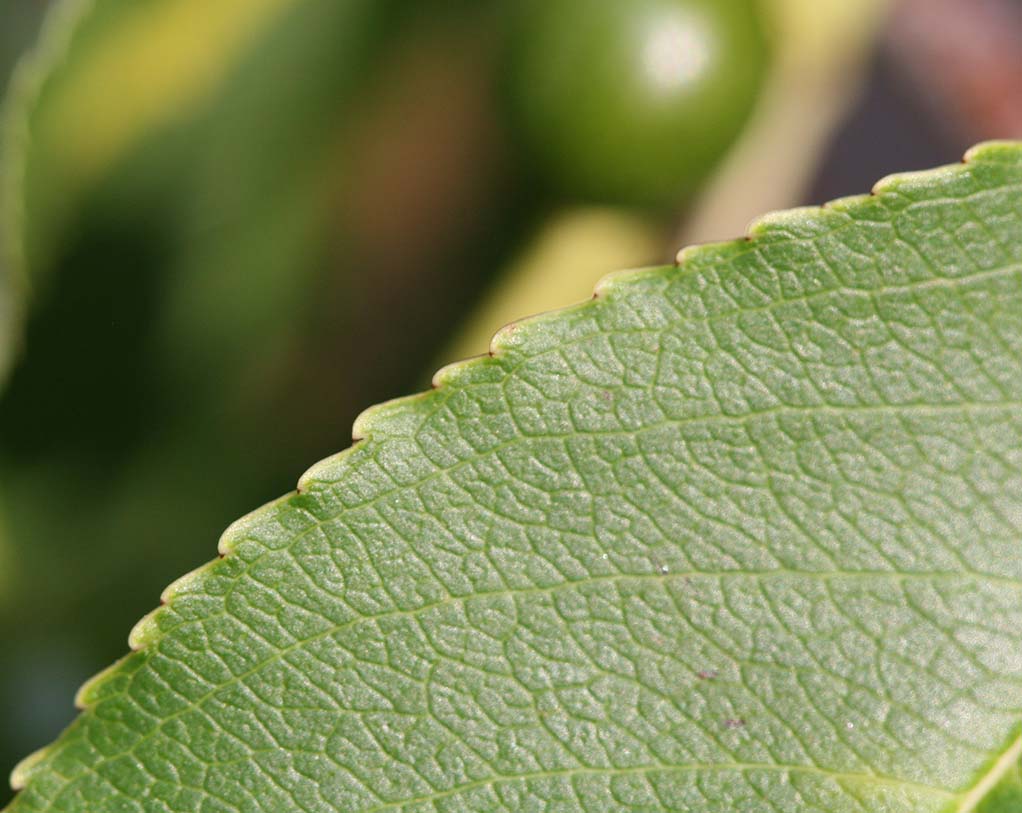
The margins of pin cherry leaves (P. pensylvanica) also have rounded teeth.
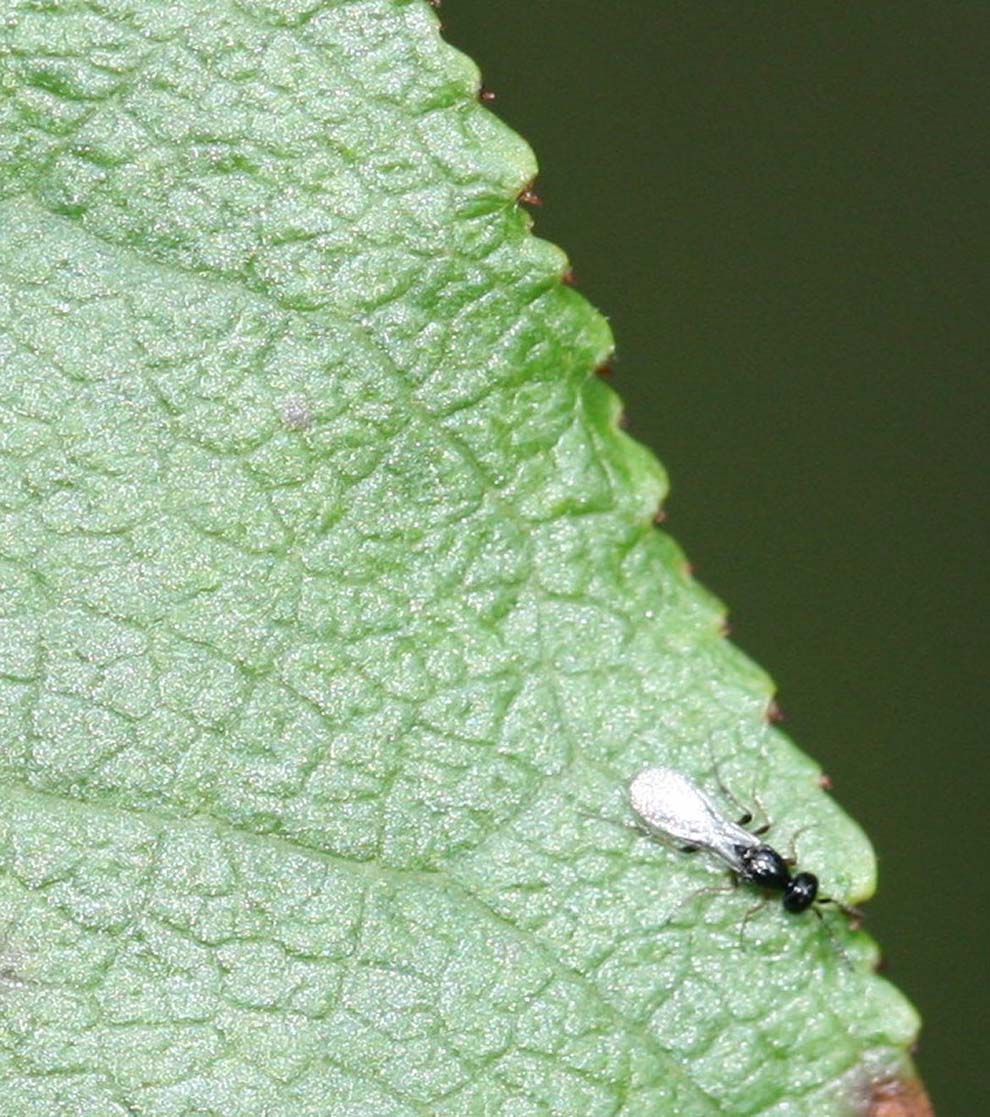
We have three common species of wild cherries in New Hampshire: choke cherry, black cherry, and pin cherry. You can distinguish them based on several characteristics.
If the tree has fruit, that’s a clue. Choke cherry and black cherry have fruit in racemes. A raceme is an elongated flower (later, fruit) cluster where there is a centraol axis and stalks for each fruit arise along that axis. Pin cherry fruit are arranged in clusters.
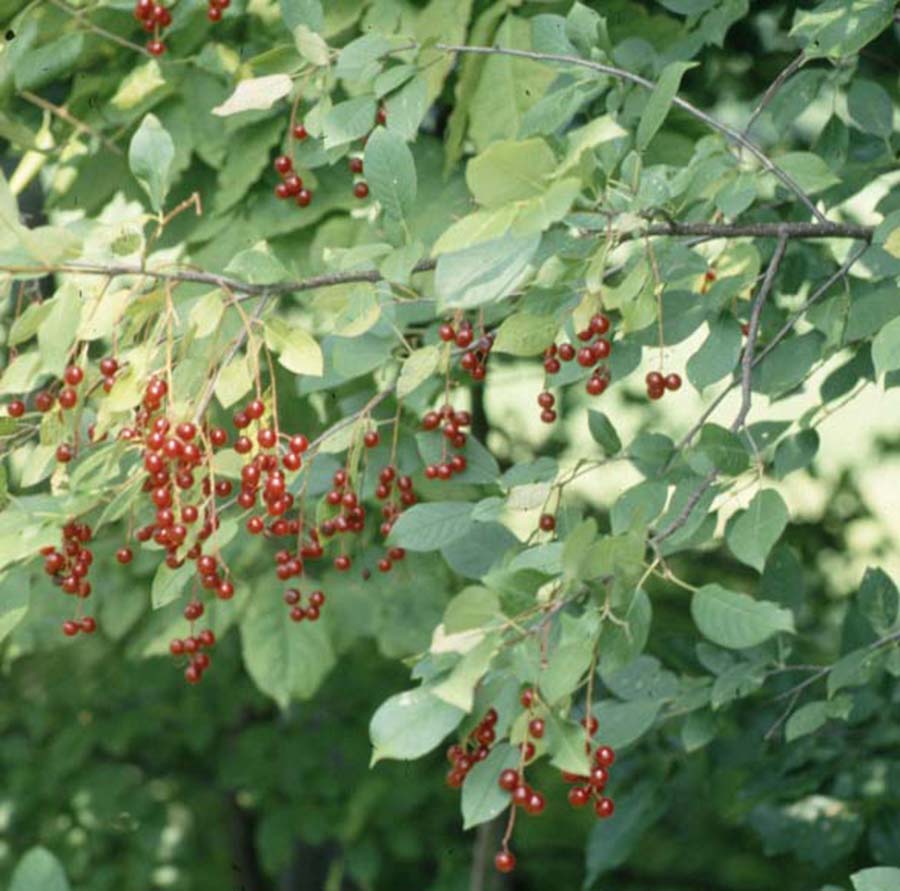
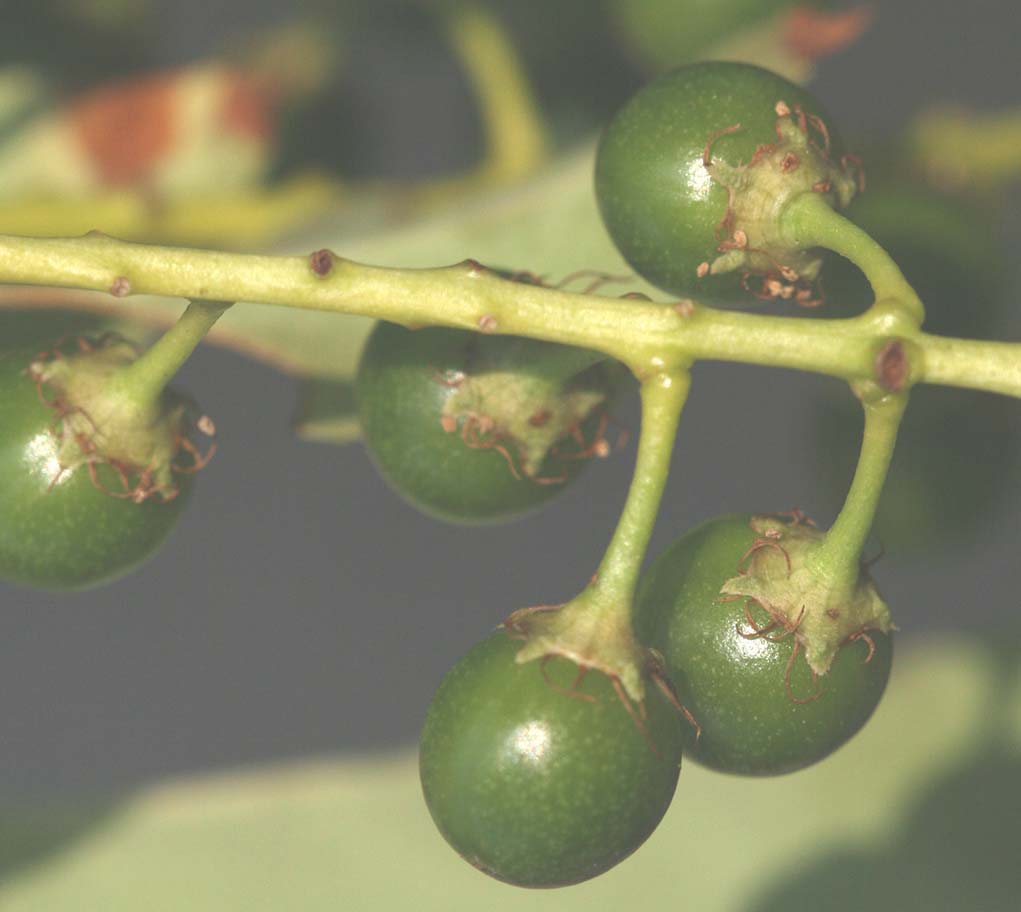
The way the stems of the fruit are attached to the fruit is another clue. Choke cherry and pin cherry fruit have stems attached to the fruit like…well…cherries.
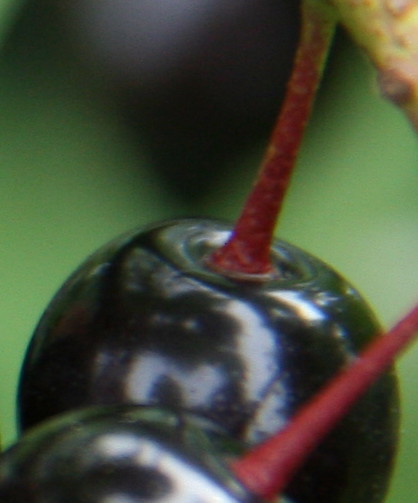
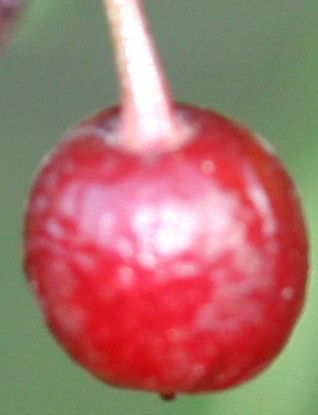
The stems of black cherry fruit are attached to the fruit by a broad, expanded cup, a bit like the way an eggplant fruit is attached to its stem.
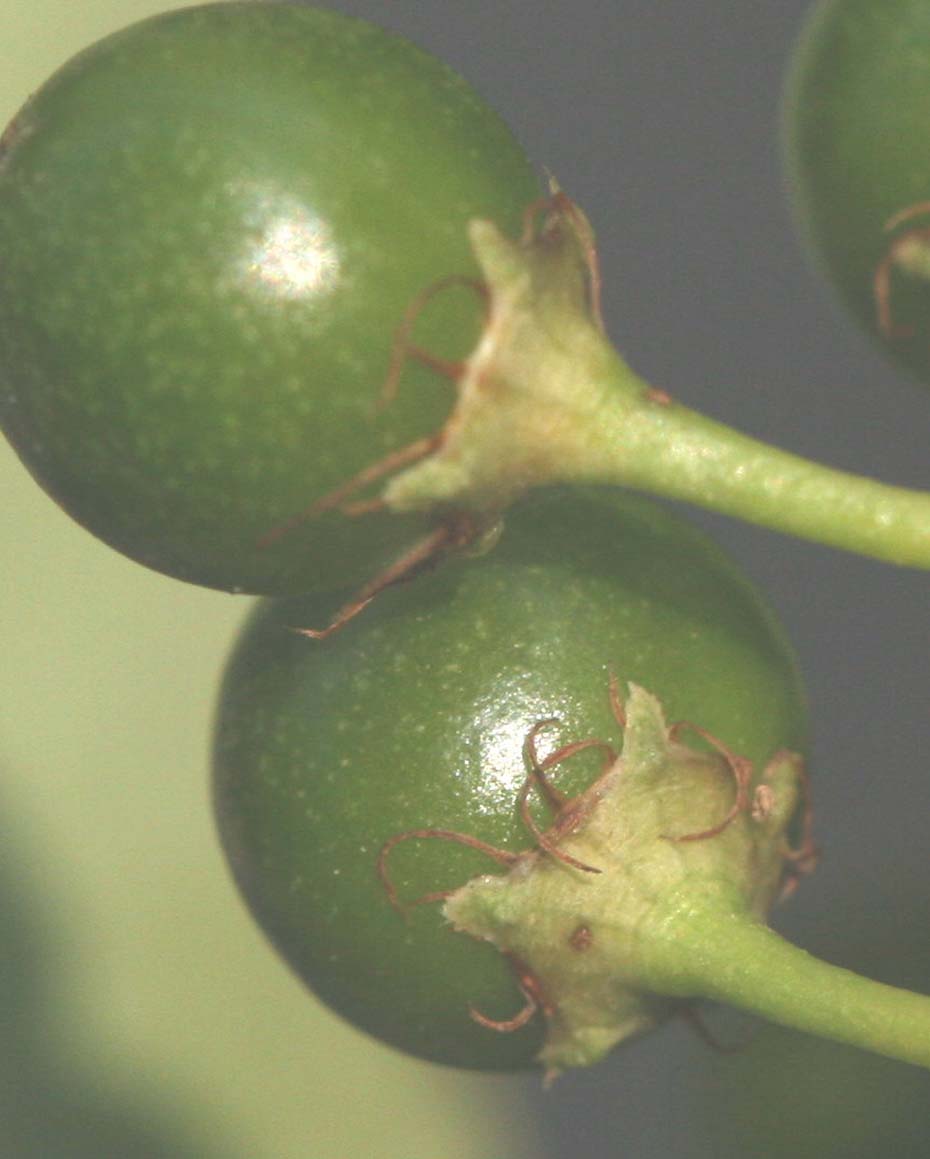
If you are CERTAIN you know how to tell all of our poisonous species (poison ivy, poison oak, poison sumac), it is safe to use the method I was taught in dendrology class: All cherries have a bitter almond taste/ smell to freshly broken, green twigs. Tasting a twig of poison ivy or poison sumac would be bad, and possibly send you to the hospital, so don’t try this if you can’t recognize all of our poisonous species! If you break off a live twig, chew it and taste bitter almond, you’ve found a tree in the genus Prunus. (cherry, plum, peach). Choke cherry and black cherry are probably the two most common wild Prunus species here. No bitter almond taste? Then that’s not a cherry (or any other Prunus).
Fruit Arrangement
The terms listed under fruit arrangement probably need further description, for those not versed in botany. Black cherry and choke cherry both bear their fruit on racemes --- this means the cluster of fruit has a long stem in the center, and the stems of each fruit are each attached down that long stem. Note that the stems of pin cherry fruit attach differently; they attach together in groups at the same point, like a cluster.
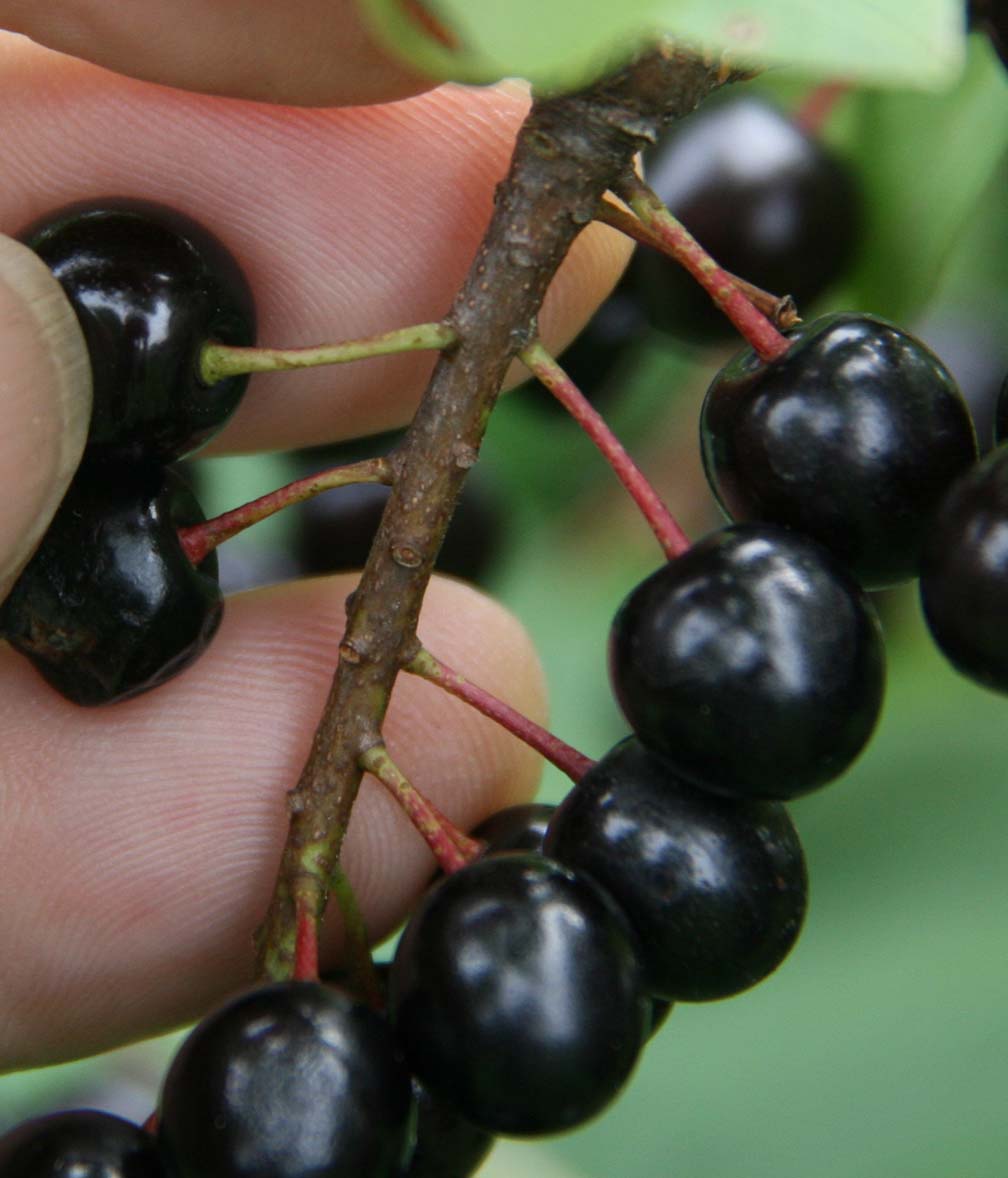
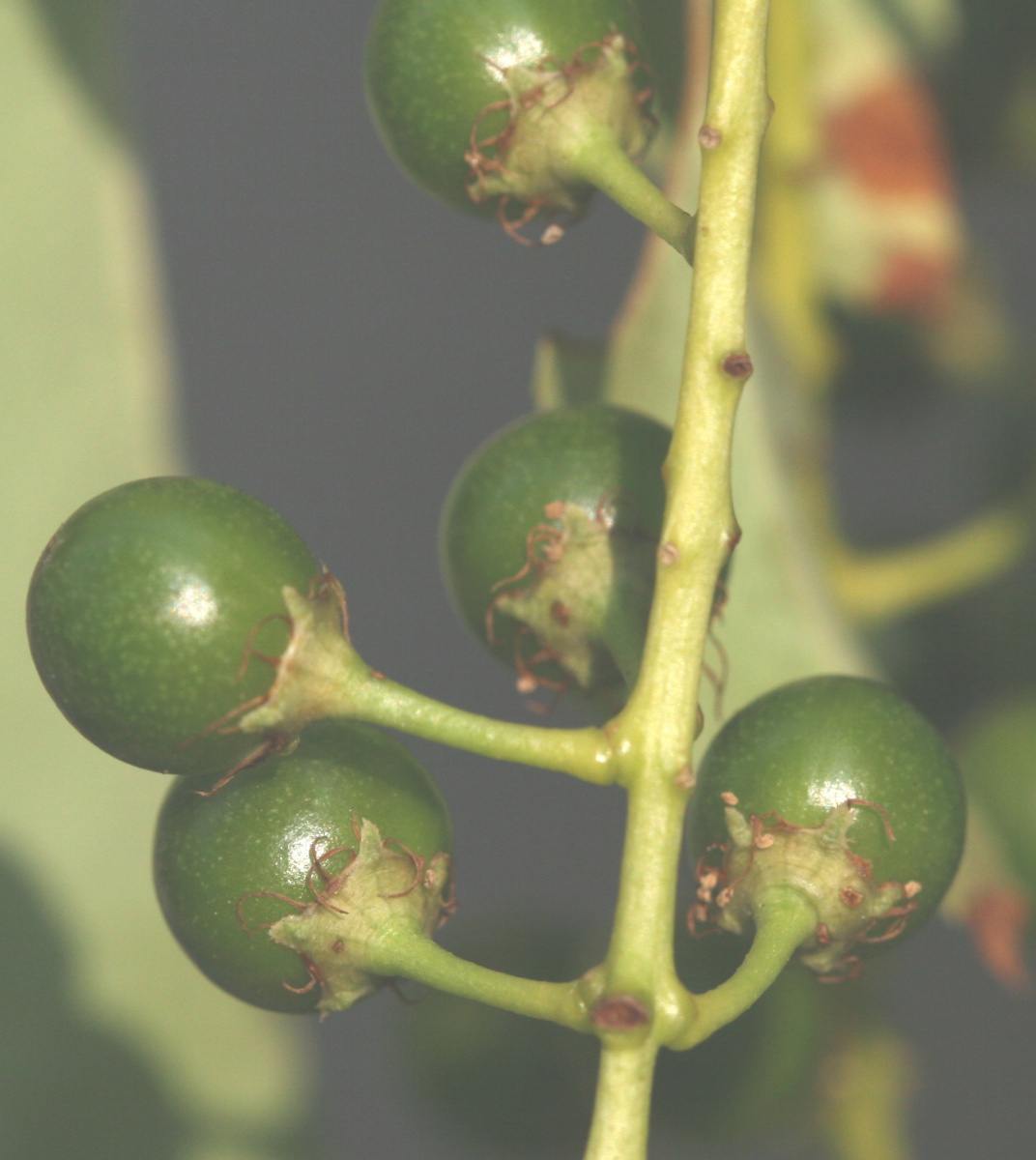
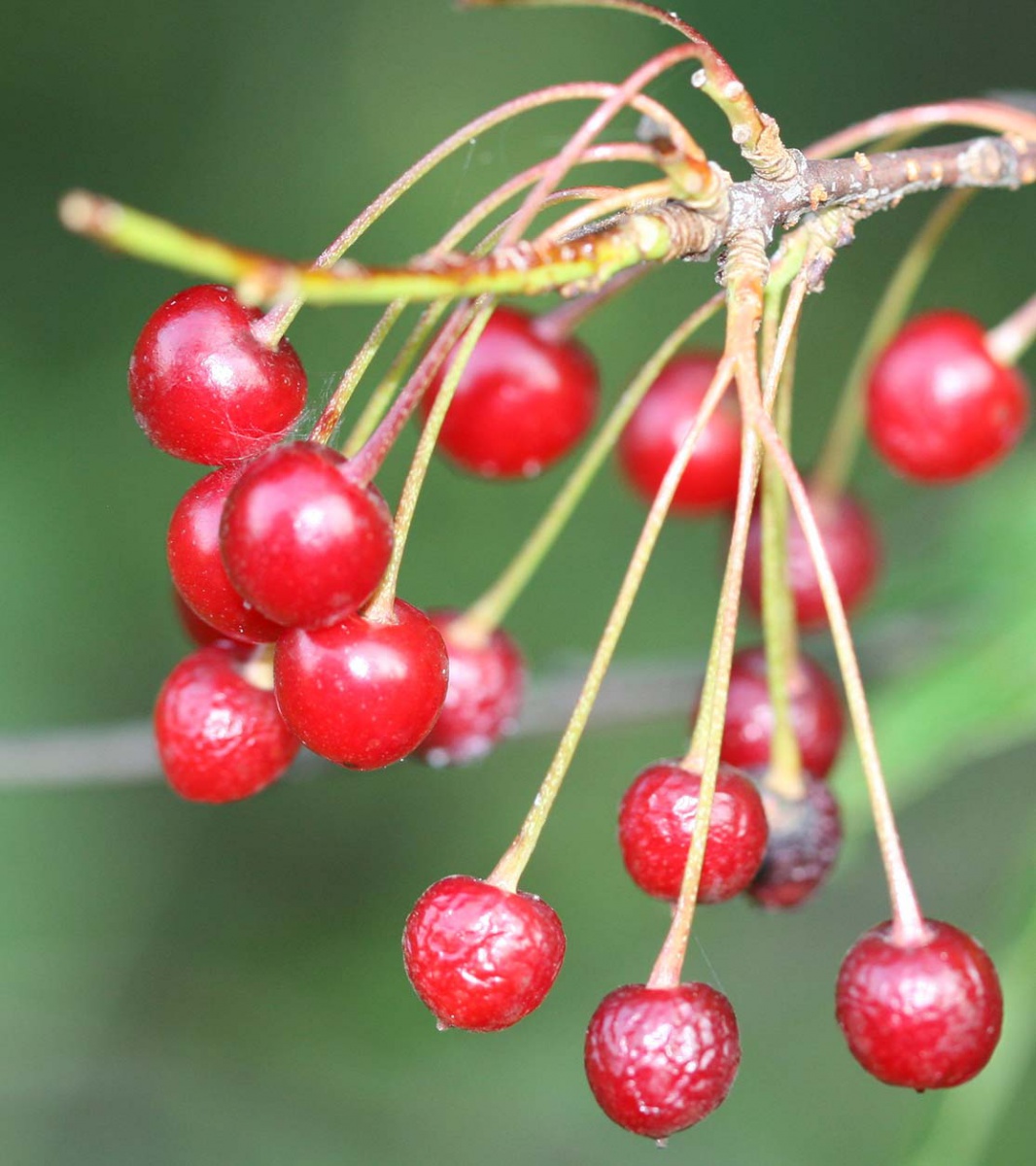
Late July is the ideal time of year to identify infected choke cherries. That's when their colors really stand out.
Mature Tree Size
Choke cherry - small, oftern 3 - 5 feet. Pin cherry - medium, up to 30 feet. Black cherry - large, up to 60 feet.
These one-word descriptions are a bit deceptive. Usually when we search for choke cherries, what we find are really small, young things, often 3-5 feet high, not big trees. You could pull them out, but a more effective way (I feel) is to treat them with herbicide. That way you know they will die. One New Hampshire grower was cutting them off at ground level, but I think that just makes more work later, when the trees re-sprout from the roots. Late July is the ideal time of year to identify infected choke cherries. That’s when their colors really stand out.
Did You Know?
We have three common species of wild cherries in New Hampshire: choke cherry, black cherry, and pin cherry. You can distinguish them based on several characteristics.
How Far Away Do I Eliminate Choke Cherries?
Eliminate any within 500 feet of your peach or cherry blocks. If a significant number of choke cherries are on neighbor’s property, you might want to ask if it is OK to eliminate them, and explain why. If that doesn’t work, maybe an offer of some fruit would help him or her say yes.
X-Disease Symptoms in Peach
Affected peach trees have foliage that starts showing ragged, red-edged holes. The older leaves then drop off, leaving tufts of young leaves left at the tips of bare shoots and twigs. This combination of symptoms is unique to this disease. In early stages, symptoms often show up on just one or two branches. Eventually, the symptoms spread throughout the tree.
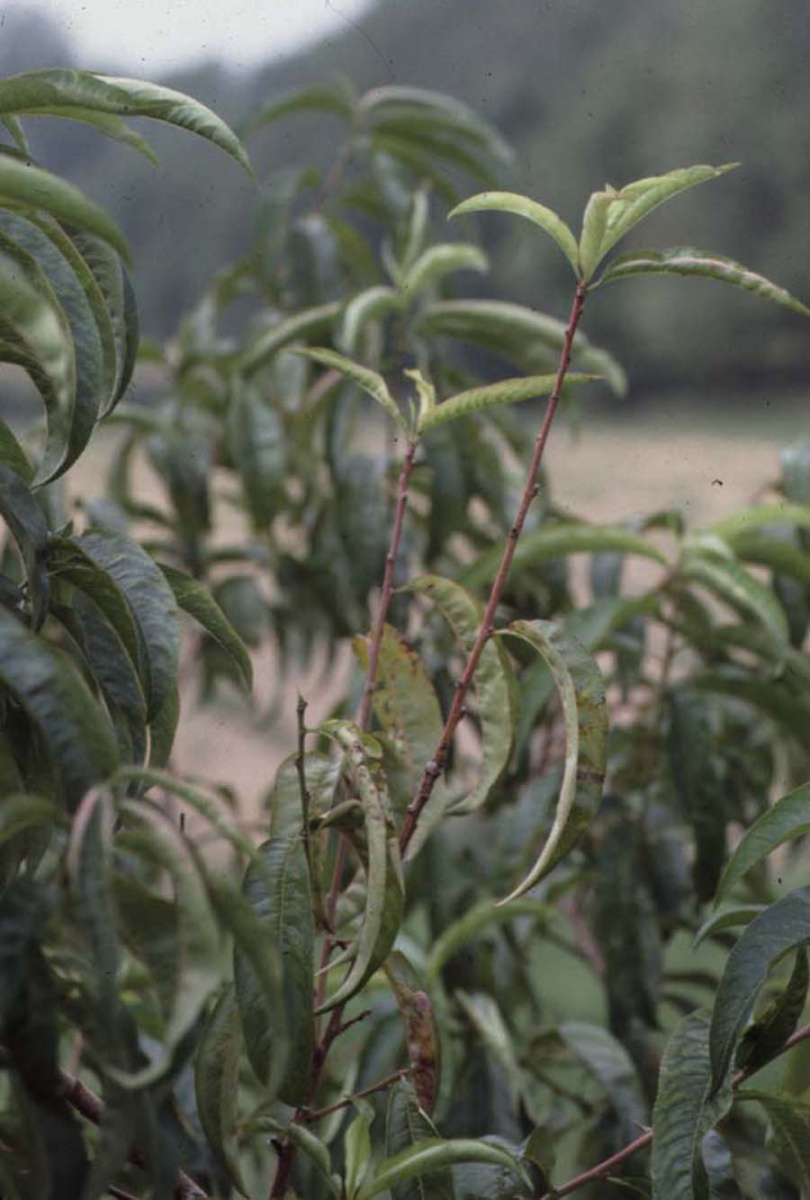
X-Disease Symptoms in Sweet Cherry
In sweet cherry, X-disease symptoms usually begin on the fruit, which are smaller than usual, pointed, and often flat-sided. They are pale red to greenish white. Initial symptoms often appear on only one or a few branches. Terminals of affected branches may lose their older leaves, giving a somewhat tufted appearance. The leaves are often smaller than normal. In late summer, the leaves can become bronzed. Some leaves show red or orange along the midrib. Sorry… I don’t have photos of that. I learned from David Rosenberger (Plant Pathologist, Hudson Valley Lab) that at least some varieties of sweet cherry show a unique symptom when infected with X-disease: the stipules look unusual. Stipules are tiny appendages at the very base of a leaf, where it attaches to the twig. They occur in pairs, one on each side. X-infected sweet cherries (at least some varieties) have greatly expanded stipules that look like extra tiny leaves at the base of each leaf. He says this is easiest to view at bloom time. If you’re unsure that one of your sweet cherries in infected, mark it, and look again when fruit are almost ripe. You should see the color differences described above.
Did You Know?
It is important to remove X-disease infected sweet cherries promptly. Unlike infected peaches, they serve as a source of the disease micro-organism.
More Detail on X-disease Vectors and Management
Based on two years of leafhopper sampling by Donald Chandler, there are three species of leafhoppers that are common in the peach-growing region of New Hampshire, that have the ability to spread the X-disease organism. They are Paraphlepsius irroratus, Scaphytopius acutus, and Colladonus clitellarius.
P. irroratus is sometimes called the irrorate leafhopper [it means sprinkled with dew]. In New Hampshire it is most abundant from late August through September, but occurs from June through October. It prefers herbaceous dicots, but will feed on a wide variety of plants.
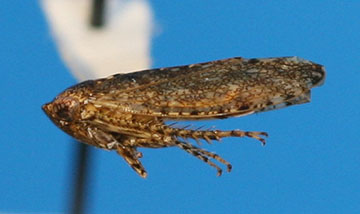
Scaphytopius acutus is sometimes called the sharp-nosed leafhopper. In New Hampshire it is abundant from mid-July through September. It prefers red clover, strawberry, and woody members of the Rose family, but will feed on a wide variety of plants. In Connecticut studies, it was the most important X-disease vector by far.
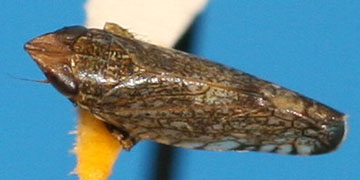
Colladonus clitellarius is sometimes called the saddleback leafhopper. It feeds on a very wide range of (mostly woody) species, and is never abundant. In New Hampshire, we find it from mid-June to mid-October.
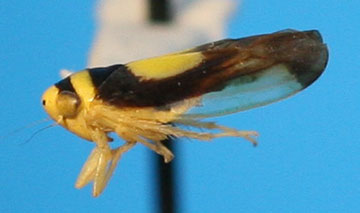
There are several other leafhoppers that might spread X-disease in New Hampshire, but none of them are very common. Knowing the feeding preferences and abundance of these three principal X-disease vectors, it is clear why Sharon Douglass (CT Agr Expt Station) recommends that growers mow the orchard regularly, to decrease the attractiveness of ground cover to these leafhoppers. She also suggests using herbicide strips to get rid of some ground cover, and if possible, eliminate red clover from the orchard. While these are helpful steps, elimination of nearby chokecherry plants is of prime importance. Now that winter-hardy sweet cherries are being grown in New Hampshire, it is also important to remove X-disease infected sweet cherries promptly. Unlike infected peaches, they can serve as a source of the disease micro-organism. Thank you to Dr. Donald Chandler for the recent leafhopper abundance and host information. The leafhopper research was supported by a Hatch grant, at the NH Agriculture Experiment Station. This publication was supported by an Extension IPM grant from the National Institute for Food & Agriculture.
In Order of Importance the Management Steps are:
- Identify and eliminate choke cherry from the orchard and its vicinity
- Cut down X-disease infected sweet cherries, if they appear
- Mow the orchard regularly
- Consider using herbicide-treated strips under the trees
- Eliminate red clover from the orchard
About the Author: Dr. Alan T. Eaton, is an Extension Specialist in Entomology and a professor at the University of New Hampshire. Much of his work is on management of fruit pests and ticks.
For More Information
State Office
Taylor Hall
59 College Rd.
Durham, NH 03824
extension.unh.edu
Education Center and Information Line
answers@unh.edu
1-877-EXT-GROW
(1-877-398-4769)
9 am-2 pm M-F
Search key words:
"UNH Education Center"
Download the Resource for the complete fact sheet.
